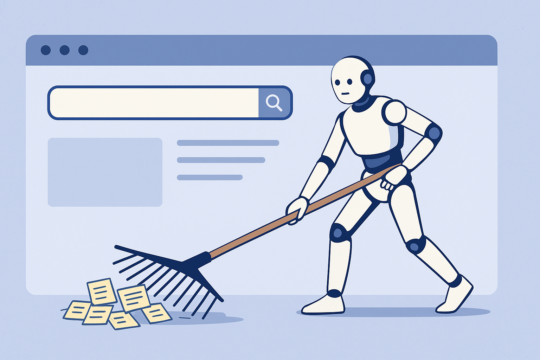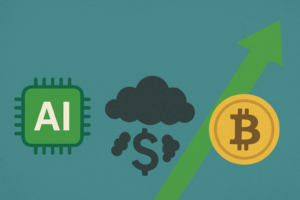Social collaboration may be a hot buzzword in Silicon Valley these days, but it’s certainly not a new concept.
Vaccines, revolutions, soaring skyscrapers and rocket ships have been built through effective teamwork and efficient resource management. In the process of doing all this great work we humans have managed to learn a few fundamental truths – that two hands are better than one, that few thoughts have not been thought before, and that community can be a singularly powerful thing.
But somewhere along the way, we began to over-engineer that community.
The telegraph, telephone, Internet and social network – all built to bring us closer together – have created some unexpected side effects. Digital divides have crept in to take the place of physical ones. The power of community, and of collective effort, has been crippled by the white noise and silos of an endless supply of input, output, back-channels and buzz.
In short, our efforts to connect seem to be leading us closer to isolation. In our new connected world, the resources at our fingertips are nearly endless, but our ability to really see them – understand, contextualize, consume and respond to the vast array of people and things around us – has all but disappeared.
We are myopic fish in an ever increasingly complex and expanding pond.
Of course, there are some obvious pros to all these networks and connections. Instead of depending on experts near your cubicle, on your floor or even in your building, you have access to friends of friends with relevant experience – thousands of “3rd degree” connections on professional networking sites. Instead of pulling an outdated training manual off the shelf when you need to upgrade software, there are hundreds of thousands of forums on how best to work around this blocker or that limitation. The world is networked and it’s all at your beck and call. But at what cost?
How about relevance, for one.
Today’s networks provide a deluge of quantity, but all that information doesn’t necessarily mean you’re getting what you really need. All those connections and resources are meaningless if you can’t determine what’s important, when it’s relevant and how it can help you solve the problem at hand. After all, what’s the point of having a thousand ‘friends’ if all you know about them is their relationship status and what avatar they’ve chosen? Where’s the quality in that connection? And no one-dimensional online profile is going to tell you whether or not that person is working on similar problems, or has a crucial bit of information that can change your project or save you months of research.
The problems have bled beyond our networked gaming, professional and social lives. With every chat, email or text we send, we disconnect ourselves further from the things that might be most important to the work we’re doing, causing us to miss bits and pieces of those crucial interactions in the dissonance. Every time we push the boundaries of our networks we’re complicating the already challenging task of making sense of it all.
These networks are comforting in their expansiveness – on the surface they satisfy our need for inclusion and community. But in reality the power of these networks, the collective capacity that can come from intelligent collaboration through rapid iteration and diversification of information, is lost in the noise.
Social collaboration has the makings of a transformative technology that can truly change the way we work, and how we work together. That said, there is risk in diving headfirst into new technologies without first recognizing and exploring issues that could affect adoption and, ultimately the success of that solution in the real world. Many current collaboration tools have us believing in the power of serendipity and the power of digital immediacy. But, as Gartner suggests in a recent report, they are doing little below the surface to identify context and establish meaningful, fruitful and intentional connections. In this sense, they are simply contributing to the overload, rather than solving it or evolving to what’s needed.
The next generation of social platforms won’t measure its success on the number of connections or the quantity of posts and likes. The next generation of social platform will focus on connecting people with things they need — content, experts, conversations and resources that help them get their work done. In addition to all the bells and whistles that you’d expect from an engaging social network platform, these next generation solutions will also start to fill the gaps with better relevancy, real personalization and systems to help you measure your progress and goals.
Relevancy has gotten a lot of attention from search engines and content creators, but the target of that attention hasn’t necessarily been focused on getting you to the things you need to learn. Rather, companies like Google have leveraged search to serve up ads. And while those ads might be tailored to the daily habits, queries, and clicks of their viewers, the results aren’t going to make you better at your job; they might, however, find you a good pair of shoes. It’s time to leverage the same rigorous focus on relevance and utility that ad servers use to serve up content and connections for you to learn, not for you to buy.
When today’s social collaboration tools aren’t waving their relevance flag, they are busily promoting the ‘personalization’ of their content. Two options in lieu of one isn’t personalization. True personalization of content requires massive computing power and intelligence engines analyzing every input, output, action and reaction that occurs in your day-to-day, plugged-in experience. Social collaboration should be full of these moments – search results, interaction with peers, surveys and goal setting – moments that can be measured, gauged and used to help inform recommendations and connections on the platform.
Finally, social collaboration is not just a static social feed. It should provide a host of valuable information about an individual’s trajectory, or about progress across an entire company. These types of tools could help make social collaboration more actionable, and opens up future applications as an interactive training tool or a means to track individual learning in real time.
Today, companies and organizations invest millions of dollars developing and maintaining resources and tools needed to train their employees and help them innovate. Millions more are applied in attempts to measure or evaluate the effectiveness and outcomes of these resources and tools. Instead of tackling one part or another of the greater, systemic problem, it’s time to pursue a singular solution, that utilizes social collaboration and data intelligence, that can deliver measurable progress, whether among individuals, within companies or across new and uncharted frontiers.
Via: VentureBeat
Image Credit: CTIN Mexico













